I've got a deadline, which didn't stop me reading these articles (but did stop me posting thoughts about them):
Back to the mines...
As feared, Chicago is experiencing a weekend of perfect weather. As a consequence, Parker and I just finished an hour-and-three-quarters walk that had to include time at Noethling Park (aka "Wiggly Field"). We're recovering for a moment before heading outside again for another one.
Regular updates will resume when the crisis concludes.
(Note: Ordinarily I would have linked to the Chicago Park District's official page on one of its parks, but apparently they forgot to pay the Internet bill, so at this writing their site dead-ends at Network Solutions. Nice work, guys.)
After logging the warmest spring and third-mildest winter in Chicago history, we have a huge likelihood of a warmer-than-normal summer. Yesterday, though, we had one of those perfect days Chicagoans can count on two hands every year: sunny, dry, and 24°C, the kind of day that Parker and I spend entirely outside.
It turns out, a relatively unusual weather pattern could give us more than a week of this sort of thing:
[C]omputer models indicate what is meteorologically-termed an upper-level "Omega Blocking" pattern will establish itself over the United States for the remainder of the workweek. With a trough of low pressure over the east and west coasts and a high pressure ridge over the central plains. This will establish an extensive low-level cool high pressure air mass over eastern Canada into the northeastern and north-central U.S. For Chicago, situated in the southwestern quadrant of the high pressure, it in turn means an extended period of east to southeasterly flow, relatively dry conditions and daily temperatures around normal levels, except cooler readings along the lakefront and beaches.
The official forecast calls for temperatures around 20°C (after 26°C today) and sunny skies through Saturday.
It's all very confusing to us here, all this nearly-perfect weather. We'll just have to muddle through...
As I mentioned yesterday, Illinois state climatologist Jim Angel has certified that March 1 to May 31 was the warmest spring in Illinois history:
This year the statewide average temperature for spring in Illinois was 15.1°C. That makes it the warmest spring on record for Illinois. The statewide records go back to 1895. The [three] warmest springs in Illinois were:
2012 with 15.1°C
1977 with 14.1°C
1921 with 13.3°C
It was also Illinois' fifth-warmest May ever. And so far, it's the warmest year ever in Illinois (since January 1). Interestingly, Angel points out, "of the top five warmest January-May periods, three have occurred in the last 15 years."
Meteorological spring ends today, and despite the dreary weather (9°C, rain), the last three months have been the warmest on record:
The weather as meteorological spring 2012 draws to a close couldn't be less representative of the season as a whole. Abnormal warmth has characterized the past three months. Spring 2012 is to go down in the record books as Chicago's warmest in 142 years running a stunning 5°C above normal!
The last spring with temperatures even close to the one about the end occurred 35 years ago in 1977 when temperatures finished within a degree [Fahrenheit] of this one.
The state climatologist should weigh in tomorrow morning with the exact figures.
This evening's eclipse, through clouds:
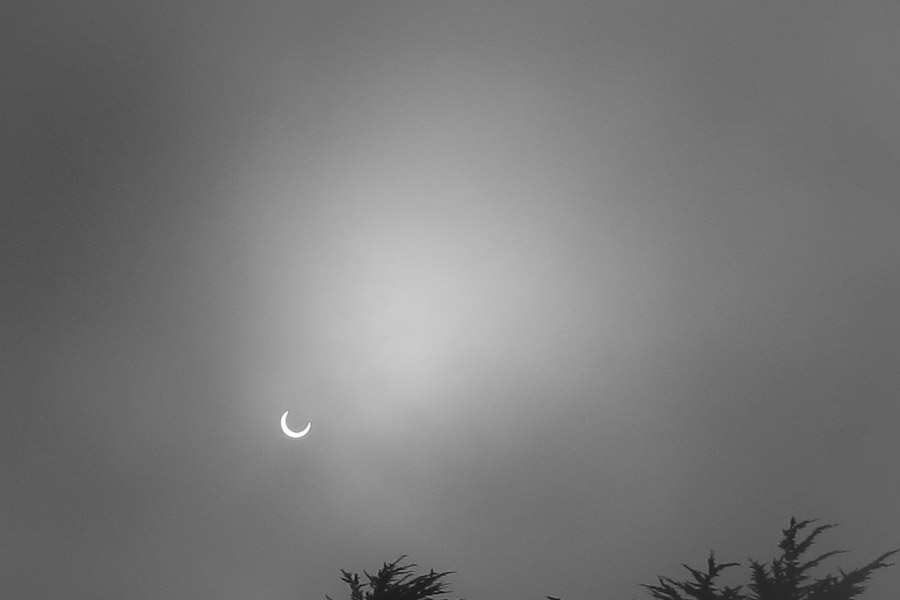
Also visible in the shadows:
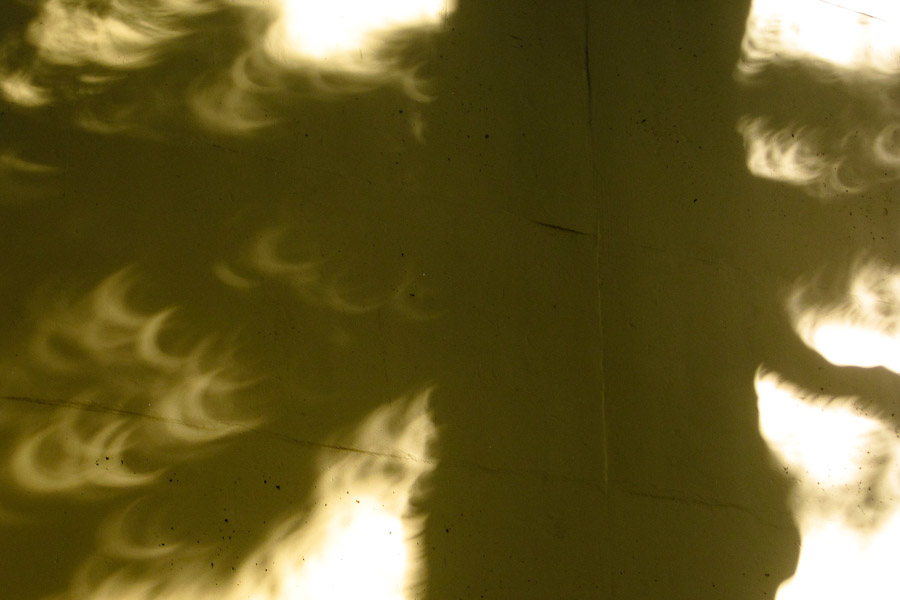
An hour later, it's a lot brighter out.
But only if you're near the Pacific:
The midwest might not have the best view but the annular solar eclipse will at least be partially visible from here. The southwest will have the best vantage point when the sun appears as a "ring of fire" when the moon passes between it and the earth on Sunday. The moon will cover about 95% of the sun's diameter during this event. The eclipse will follow a path 8500 miles long for about 3 and a half hours. The "ring of fire" spectacle will last up to 5 minutes depending on the vantage point. Six national parks in the west, including Redwoods National Park in California and Zion National Park in Utah, are enticing visitors by offering some of the best views since the eclipse track will drift right over the parks.
The eclipse starts in San Francisco at 17:16 PDT, reaches its maximum at 18:33, and ends at 19:40. Here's a map from the University of Manitoba:
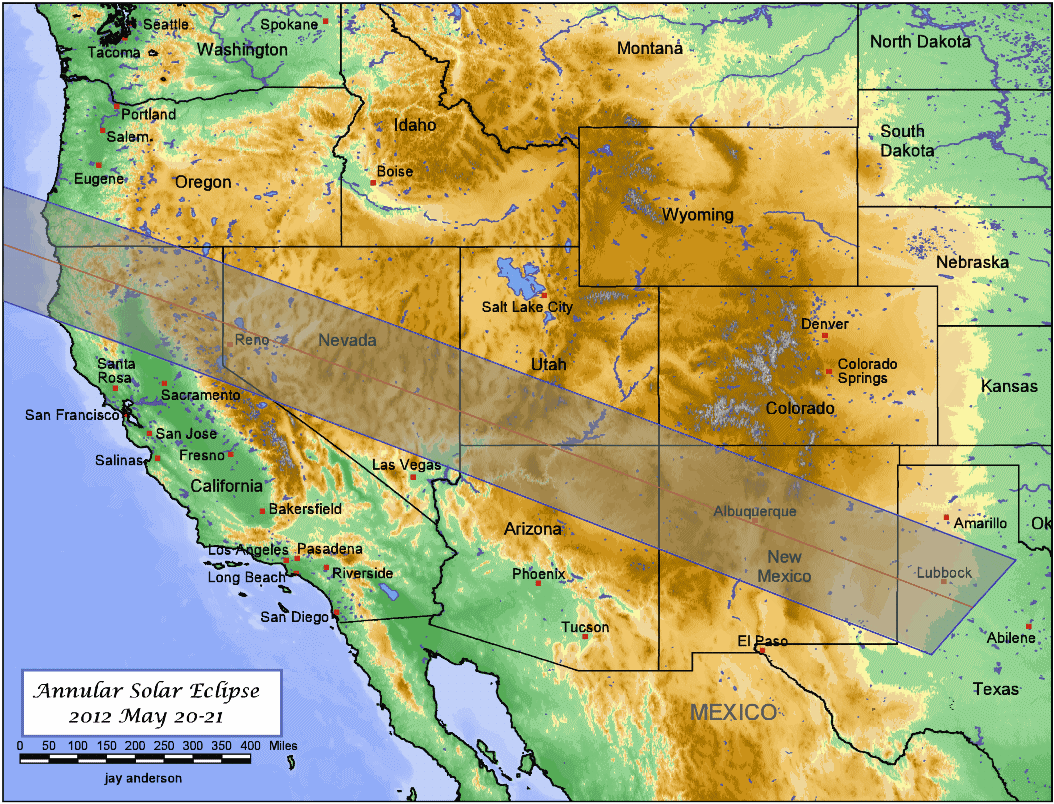
Remember, don't look at the eclipse directly. It's an annular eclipse, so it will be dangerously bright if you look straight at it.
Update: NASA has an information page about this event.
For the last day or so, Chicago has had record-low humidity of all things, with dewpoints below 0°C for much of it:
This is the third day this year and only the 19th day in 142 years dating back to 1871 that the city has officially logged a relative humidity below 20%. At Midway Airport the relative humidity also dropped to 17 percent at 5pm.
This is the lowest relative humidity recorded in Chicago in more than six years since another 17 percent humidity was logged on February 20, 2006.
The other two low humidity days this year were back on April 8 and 9 when the relative humidity dropped to 19%.
Right now the dewpoint of 2°C on a temperature of
26°C gives us a relative humidity around 21%. For comparison, though, in Las Vegas the humidity is about 3%, so we're really not that dry here.
It looks like we're not hearing the truth about anthropogenic climate change. Who's keeping the lid on the data? Climate scientists:
Climate scientists have been consistently downplaying and underestimating the risks for three main reasons. First, their models tended to ignore the myriad amplifying carbon cycle feedbacks that we now know are kicking in (such as the defrosting tundra).
Second, they never imagined that the nations of the world would completely ignored their warnings, that we would knowingly choose catastrophe. So until recently they hardly ever seriously considered or modeled the do-nothing scenario, which is a tripling (820 ppm) or quadrupling (1100 ppm) of preindustrial levels of carbon dioxide over the next hundred years or so. In the last 2 or 3 years, however, the literature in this area has exploded and the picture it paints is not pretty (see “An Illustrated Guide to the Science of Global Warming Impacts: How We Know Inaction Is the Gravest Threat Humanity Faces").
Third, as Blakemore (and others) have noted, the overwhelming majority of climate scientists are generally reticent and cautious in stating results — all the more so in this case out of the mistaken fear that an accurate diagnosis would somehow make action less likely. Yes, it’d be like a doctor telling a two-pack-a-day patient with early-stage emphysema that their cough is really not that big a deal, but would they please quit smoking anyway. We live in a world, however, where anyone who tries to explain what the science suggests is likely to happen if we keep doing nothing is attacked as an alarmist by conservatives, disinformers, and their enablers in the media.
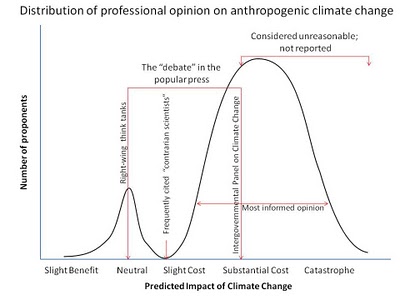
The post goes on to outline how much fun life will be in 80 years when, if we do nothing, global temperatures will be 5–7°C warmer than now. A related article goes into more depth, and includes this chart of what summers might be like:
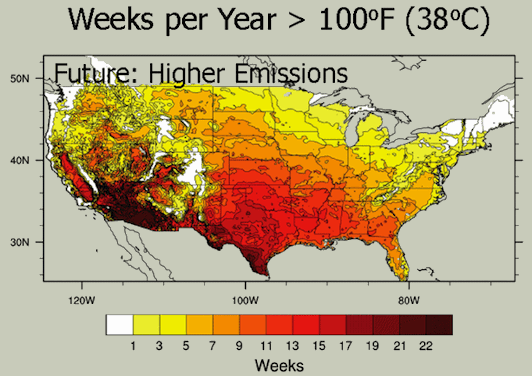
I'll wrap up by linking to yesterday's Science Friday, which discussed the appalling lack of scientific literacy in government. And the band played on...
The Tribune has a graphic this morning pointing out a number of things about our lack of snow this past winter. It turns out, the snowfall on March 4th was the earliest last snowfall. That is, in the rest of recorded history (back to 1884), we've always gotten snow later than March 4th. Until this year.
Our entire season gave us only 11 days with 25 mm or more of snow on the ground (normal is 43); it was one of only 10 seasons (out of 128) with less than 500 mm of snowfall total (normal is 932 mm); and it's the second-shortest interval from first to last snowfall ever, at 117 days (normal is 174).
Of course, snow has fallen in 40 Mays of the 128 in history...so this could all be completely wrong. We've even gotten snow in June (on 2 June 1910). But it looks for now like we can add one more quantification to our wonderfully mild winter.